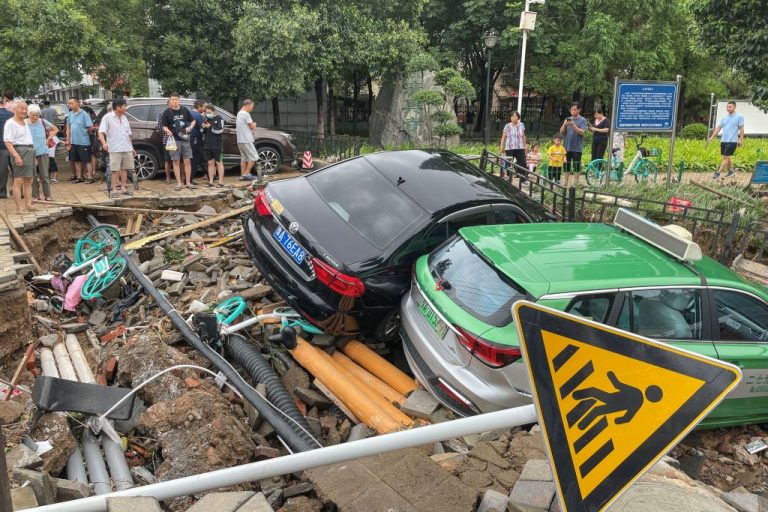The recent catastrophic flooding throughout Henan province has highlighted China’s persistent problem of poorly constructed infrastructure, which many believe contributed significantly to the death and destruction wrought by the flooding.
Official tallies, which are widely interpreted as extremely conservative, indicate that at least 51 people lost their lives in Henan’s provincial capital of Zhengzhou. Many drowned in water-logged subway systems and subterrain transport tunnels on July 20 after Zhengzhou registered rain in a single day that the city would typically receive in a year.
The historic rainfall led some official Chinese media — normally adverse to criticizing the Chinese Communist Party (CCP) — to admit that the government had failed on infrastructure planning.
On Monday, August 2, China’s State Council announced that an investigative team would examine the handling of the floods, and would propose measures to improve disaster prevention according to Xinhua, a state-run news agency.
“Those who are found breaching their duties in the Zhengzhou flood will be held responsible according to the law and regulations,” Xinhua reported.
Nowhere appears safe
Success
You are now signed up for our newsletter
Success
Check your email to complete sign up
China’s risk exposure to flooding and the catastrophic loss of life and property that it entails, according to official data, appears to affect practically every corner of China.
“Official data shows about 98% of China’s 654 major cities are vulnerable to flooding and waterlogging, with rapid growth in recent decades creating urban sprawls that covered floodplains with impermeable concrete,” Reuters reported.
In many cases, the infrastructure overwhelmed by the flooding was inadequate and may not have even existed in the first place. Videos have surfaced online of citizens inspecting the drainage systems in their communities, and finding that the grates lead to nothing.
“Aunt, Shanghai is really amazing! They found that the sewer entrances in the newly built community were all fake,” one netizen wrote on Twitter.
Of China’s 1.4 billion people, close to two-thirds live in cities that depend on adequate infrastructure, most notably flood prevention and drainage systems, experts say.
It’s widely speculated that poor or nonexistent drainage contributed to the deaths of scores of people in the Zhengzhou Jingguang Expressway tunnel, with some estimates numbering in the thousands.
While critics have scorned the city’s infrastructure, China’s zest for building tens of thousands of dams has also recently come under fire. The resulting framework has become so complex that many believe it may be virtually unmanageable during a crisis.
Tens of thousands of dams
The CCP appears to be obsessed with building dams, which in theory provide water during droughts, allow for hydrological control during the rainy season, and are an abundant source of hydro-generated electricity. However, the reality is that catastrophes are imminent. From 1954 to 2005, a total of 3,486 reservoir dams collapsed in China.
On average, 68 dams fail in China every year without the added catalyst of torrential rainfall. “The extent of casualties and economic cost due to these dam failures may surpass that of a natural disaster like a tsunami or strong earthquake, and may be no less damaging than a local war,” E. Jingping, former Secretary-General of the State Flood Control and Drought Relief Headquarters and Vice Minister of Water Resources, told The Epoch Times.
Arguably the world’s worst dam disaster was that of China’s Banqiao reservoir dam collapse in 1975. In a matter of days, 26 dams collapsed, resulting in the flooding of nine counties and one town. Perhaps the most dire of consequences was not the flooding itself, but the economic impact that followed.
An estimated 140,000 deaths were attributed to grain shortages and infectious diseases as a result of the disaster. It will be many months before the world understands the true extent and consequences of the recent flooding in Henan province.
















